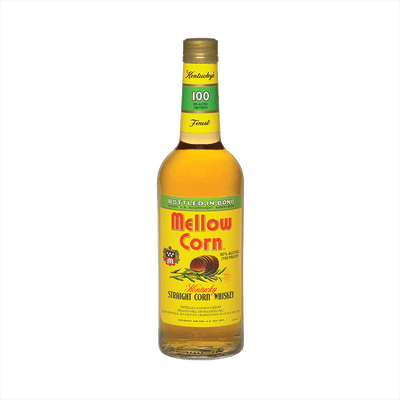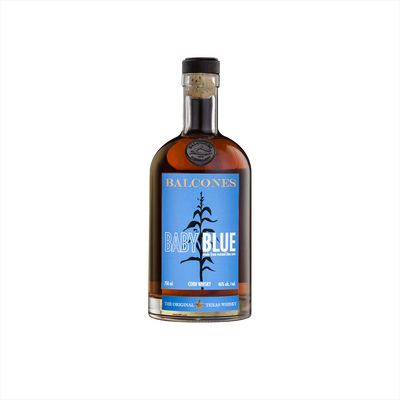Corn Whiskey
What is Corn Whiskey?
Corn whiskey is a specific type of Other Whiskey that must contain at least 80% corn in its mash bill, making it the most corn-forward spirit in the American whiskey family. Unlike bourbon, corn whiskey can be aged in used barrels or remain unaged, and it doesn't require the charred new oak aging that defines its more famous cousin. This creates a spirit that showcases the pure, sweet character of corn without the vanilla and caramel notes that new oak barrels typically impart.
Learn More About Corn Whiskey
What makes Corn Whiskey unique?
Corn whiskey stands apart from other whiskeys through its mash bill requirement of at least 80% corn, creating a distinctly sweet and grainy flavor profile that's more pronounced than bourbon's typical 51% minimum. Unlike most other whiskeys, corn whiskey can be bottled straight from the still without aging, or if aged, it must use uncharred or previously used barrels rather than new charred oak. This results in a spirit that showcases the pure essence of corn without the vanilla and caramel notes that new oak typically imparts to bourbon and rye whiskeys.
How is Corn Whiskey made?
Corn whiskey starts with a mash bill that's at least 80% corn, which gets fermented with yeast and then distilled to no more than 160 proof. Unlike bourbon, it doesn't require aging in new charred oak barrels - it can be bottled straight from the still or aged in used barrels, neutral containers, or even uncharred wood. This flexibility in aging gives distillers plenty of room to play with flavor profiles, from clear white lightning-style spirits to mellower aged expressions.
How do you drink Corn Whiskey?
Corn whiskey shines brightest when sipped neat or on the rocks, letting you taste its sweet, grainy character and often youthful bite without distraction. It also works beautifully in rustic cocktails like a Corn 'n' Oil (with blackstrap rum and lime) or mixed into whiskey sours where its corn-forward sweetness adds depth. Save this spirit for cooler months and casual gatherings – think autumn bonfires, hunting cabin weekends, or any time you want something authentically American with a bit of rough-hewn charm.
How do I choose good Corn Whiskey?
When selecting a corn whiskey, look for bottles that list their mash bill—you want at least 80% corn content, and many of the best examples push that number even higher for maximum sweetness and body. For sipping neat or on the rocks, seek out aged versions that have spent time in charred oak barrels, which add vanilla and caramel notes that balance corn's natural sweetness. If you're mixing cocktails, younger or unaged corn whiskeys work beautifully in fruit-forward drinks like punches or juleps, where their clean, grainy character won't compete with other ingredients but will provide a solid foundation.
Nutritional Information
Typical Calorie Range per Ounce: 64-70 calories
Typical Carbohydrate Range per Ounce: 0-0.1 grams
Typical Sugar Range per Ounce: 0 grams
Typically Gluten Free: Yes
Corn whiskey is naturally gluten-free since it's distilled from corn rather than gluten-containing grains like wheat, barley, or rye. The distillation process removes proteins, including gluten, making it safe for most people with gluten sensitivities. That said, always check the specific product information and consult with manufacturers if you have severe gluten allergies, as cross-contamination during production is always a possibility.
Scrolled this far? Your reward? Corn Whiskey Trivia!
- Corn whiskey is the only American whiskey that can legally be aged in used barrels – while bourbon and rye must use new charred oak, corn whiskey makers can grab previously used containers, which means some distillers age their corn whiskey in old bourbon barrels, essentially getting a double dose of oak influence and creating completely different flavor profiles than their grain bill siblings.
- NASCAR's legendary moonshine connection runs deeper than folklore – many of the sport's founding drivers were former bootleggers who souped up their cars to outrun federal agents while hauling corn whiskey, and Junior Johnson, who won 50 NASCAR races, served nearly a year in federal prison for operating an illegal corn whiskey still before becoming a racing legend.
- The phrase "white lightning" specifically refers to unaged corn whiskey, but the name comes from its appearance in a jar when you hold it up to light – the high proof spirit creates an almost electric shimmer that resembles actual lightning, and old-timers would judge quality by how much the liquid "danced" when shaken.
- Corn whiskey production predates the founding of America by decades – Scottish and Irish settlers were distilling corn-based spirits in the colonies as early as the 1620s because corn grew better than traditional grains in the New World climate, making it technically America's oldest native spirit style, even older than rum production in the Caribbean colonies.
- Modern craft distillers are aging corn whiskey in everything from wine barrels to maple syrup containers to create wild flavor combinations – since the regulations are so flexible compared to other whiskeys, some distillers use different wood types like cherry, apple, or even mesquite, producing spirits that taste nothing like traditional whiskey while still maintaining the legal classification.
Higher-proof spirits can be intense. Mix carefully, taste thoughtfully, and enjoy responsibly.
Gift message (optional)


